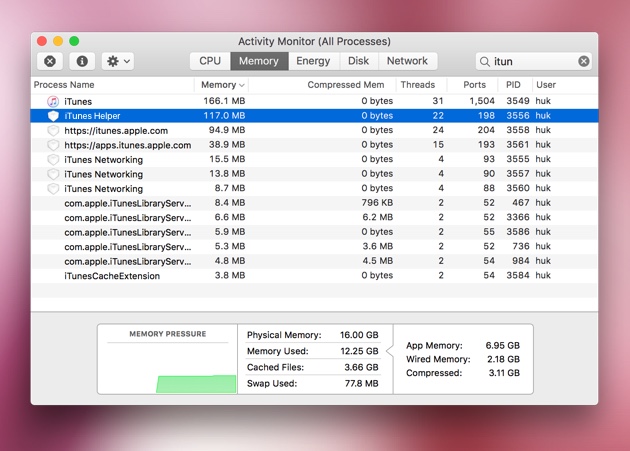- Dec 21, 2011 Here’s how to reinstall an application from the Mac App Store: Open the App Store application. (It’s on the Dock, or in the Applications folder.) Hold down the Option key and click Purchases.
- How to use Apple Music in the Music app for Mac. Open Music from your Dock or Applications folder.; Click For You in the sidebar to see your Apple-curated mixes and suggestions, recently played albums and playlists, and what your friends have been listening to.
- Play the songs, albums, playlists and podcasts you love on the all-new Pandora. Explore subscription plans to stream ad-free and on-demand. Listen on your mobile phone, desktop, TV.
- Amazon Music Stream millions of songs: Amazon Advertising Find, attract, and engage customers: Amazon Drive Cloud storage from Amazon: 6pm Score deals on fashion brands.
Click this link to land on the Big Sur page in the Mac App Store. Once in the Mac App Store, click the “Get” button or the iCloud download icon. Click “Download” to confirm the operation. This’ll cause Software Update to download the latest version of Big Sur to your computer. After downloading, the installer shall automatically open.
macOS Mojave is here and by now you may have installed it and started playing with some of its new features, like the new Continuity Camera that lets you use your iPhone as a scanner on your Mac, or the new Gallery view in Finder, or maybe the new screenshot tools.
However, it’s also possible, given that macOS Mojave is a very new release and still being fine tuned by Apple, that you’ve run into problems and need to reinstall. Thankfully, that’s very easy to do. Before we get to that, however, it’s worth eliminating one other possible cause of the problems you may be experiencing.
When you install an OS on top of another OS, and then do the same the following year when the next version comes out, your Mac accumulates lots and lots of files that it doesn’t need. These are added when applications are installed, when they’re run, and when applications like Photos, Safari, and iTunes are used. Over time these junk files can hamper the performance of your Mac. The solution is to give your Mac a cleanup. We recommend CleanMyMac X. It scans your Mac for junk files and recommends to delete them safely. It can claw back tens of gigabytes of disk space, and improve your Mac’s performance. Give it a go, you can download it for free here, and see how much disk space it can give you back.
Before you reinstall macOS Mojave
There are two types of reinstallation. One installs a new copy of macOS Mojave over the current version and leaves everything else intact. The other erases your entire startup disk and installs a clean version of Mojave. The latter is more likely to fix problems and help your Mac run faster, but you’ll have to reinstall all your applications and reconfigure all your settings.
Whichever of the two options you choose, you should back up your Mac first. If you use Time Machine to backup to an external disk or a network drive, you can restore all your applications and settings from that backup after you reinstall macOS Mojave. If you plan to run a clean reinstallation, that’s definitely the simplest route. If you prefer not to use Time Machine, you can use any other backup application, or clone your entire disk.
If you’re reinstalling because you’re going to sell or give away your Mac, you should sign out of iCloud, iTunes, and iMessage first, then run a clean installation.
How to reinstall macOS Mojave
Once you’ve backed up your Mac, you’re ready to begin the reinstallation process.
The simplest way to install macOS Mojave, and the method that Apple recommends, is to go to the App Store, find Mojave in the Quick Links section on the right hand side of the front page, click it and then follow the instructions to download and install it.
If you’re having trouble with the App Store, or you need to run a clean install, you can do the following.
1. Restart your Mac using one of the following keyboard commands:
- Command+R — this will reinstall the version of the OS that was most recently installed on your Mac.
- Command+Option+R — this will reinstall the latest version of the OS that is compatible with your Mac.
2. When the macOS window appears, if you’re not performing a clean installation, skip to step 7.
3. Click on Disk Utilities and choose the Erase tab.
4. Give your disk a name, choose APFS or Mac OS Extended (Journaled), and if Scheme is available, set it to GUID Partition Map.
5. Press Erase.

6. When it’s finished, quit Disk Utility to go back to macOS Utilities.
7. Choose Reinstall macOS.
8. Click Continue and follow the instructions. You’ll be asked to choose the disk you want to install macOS Mojave on, if you down’t see your startup disk, select Show All Disks.
9. Select Install and wait for the installation to complete and your Mac to restart.
If you ran a clean installation, you’ll be taken to the Setup Assistant to go through the process of reconfiguring your Mac. If you made a Time Machine backup before reinstalling, make sure it’s connected.

During setup, you’ll be asked if you want to transfer data from another Mac or a backup. Choose that option then navigate to the Time Machine backup to restore data. You’ll be given the option to transfer any or all of: Applications; user accounts; other files and folders; and computer and network settings. Choose the option you want and press Continue.
If you don’t transfer data during setup, you can do it at any time using Migration Assistant in Applications>Utilities.
Reinstalling macOS Mojave is very easy. Just make sure you backup your Mac first and download CleanMyMac X(free version) to give it a good clean up!
iTunes, over the years, has become synonymous with Apple. It is almost impossible to find a macOS device without iTunes installed in it. Aside from being a media player, iTunes also serves as a media library, internet radio broadcaster, and mobile device manager. From being a pure Mac-only software, iTunes has spread its user base to other systems such as Windows 7 and Windows 10.

However, even the best programs can be ridden with errors sometimes. Uninstalling iTunes from your Mac, too, is a lot trickier than removing it from Windows. With Windows, you can uninstall iTunes the same way you do with any other programs: you just need to go to Settings > System > Apps & features > iTunes, then click the Uninstall button.
Uninstalling iTunes from macOS Mojave is not as straightforward as dragging the application to the Trash, which is the easiest way of removing an app from macOS. When you try to move iTunes to the Trash, you’ll get an error message saying “iTunes” can’t be modified or deleted because it’s required by OS X.”
All Macs come pre-installed with iTunes, but it doesn’t mean that this built-in media player is necessary for macOS to function properly. You can disregard macOS’s warning and uninstall iTunes from Mojave without having to worry about any negative consequences. If you need to play some audio and video files, you can use QuickTime for your playback needs instead.
How to Uninstall iTunes in macOS Mojave
Uninstalling iTunes will not delete or change your music library. But since that is not always the case, make sure you don’t lose the your songs and other media files by backing up your library before uninstalling iTunes.
Before creating your backup, make sure all junk files are deleted so you don’t copy them over to your backup folder. You can use an app such as Mac repair app to totally get rid of trash like deleted media files.
Reinstall Apple Music App On Mac
To create a backup of your iTunes library, follow the steps below:
- Open iTunes by clicking its icon on the Dock or searching via Spotlight.
- Click iTunes > Preferences > Advanced, then tick off Copy files to iTunes Media folder when adding to library.
- Hit the OK button.
- Next, go to File > Library > Organize Library, then tick off Consolidate files.
- Click OK.
- Go back to iTunes > Preferences, then copy your iTunes folder location from there.
- Navigate to the folder location on your hard drive, right-click on it, and choose Copy.
- Go to the folder where you want to save your iTunes library backup, right-click anywhere on the folder, and click Paste.
Once you have created your music library backup, you can now uninstall iTunes from Mojave by following the instructions below:
- Navigate to Finder > Go > Applications.
- Scroll down to iTunes and right-click on it.
- Choose Get Info.
- Click the golden lock icon at the bottom of the window.
- Type in your admin username and password. This will unlock the app and allow you to change the app’s permission settings.
- Click Sharing & Permissions to expand and show the options.
- Beside everyone, change Privilege to Read & Write by clicking the up and down arrows. This will give you complete control over the application and will remove the warning message shown whenever you drag iTunes to the Trash.
- Close the information window.
- Go back to Applications > iTunes.
- Drag the icon to the Trash, then empty it to complete the process.
This will uninstall the iTunes app from your Mac, but your library should still be intact. In case you want to reinstall iTunes, you can simply point iTunes to your old library to recover your media files.
How to Reinstall iTunes Without Losing Music
Reinstalling iTunes is as easy as launching Mac App Store and checking the Software Update tab. Software Update will automatically scan your computer for missing components, such as iTunes, and try to restore them. The latest version of iTunes, which is version 12.9, comes installed with macOS Mojave, and there is no standalone installer for it. You can download version 12.8 here instead, or the Windows version here.
Once you have reinstalled iTunes, go to Music and check if your music library is intact. If the library is empty or there are missing songs, you need to reset your cache.
To do this:
- Click iTunes, then choose Preferences.
- Click Advanced, then hit the Reset Cache button.
- Click OK to exit.
- Check iTunes’s My Music tab once again to see if the library has been restored.
If this doesn’t work, try launching the app in Safe Mode by holding Command + Option while launching iTunes. Another option is to delete the cache in your Music folder.
Summary
Uninstalling the iTunes app is an effective troubleshooting method if you’re experiencing errors or other issues with the application. However, some Mac users are hesitant to uninstall iTunes because they are afraid of losing their entire music library. Downloading all those songs would be time-consuming and a hassle.
How To Reinstall Music App On Mac

Fortunately, you can uninstall iTunes without losing your music by following the steps listed in the guide above. You no longer have to worry about losing your songs if you need to uninstall then reinstall iTunes on your Mac.